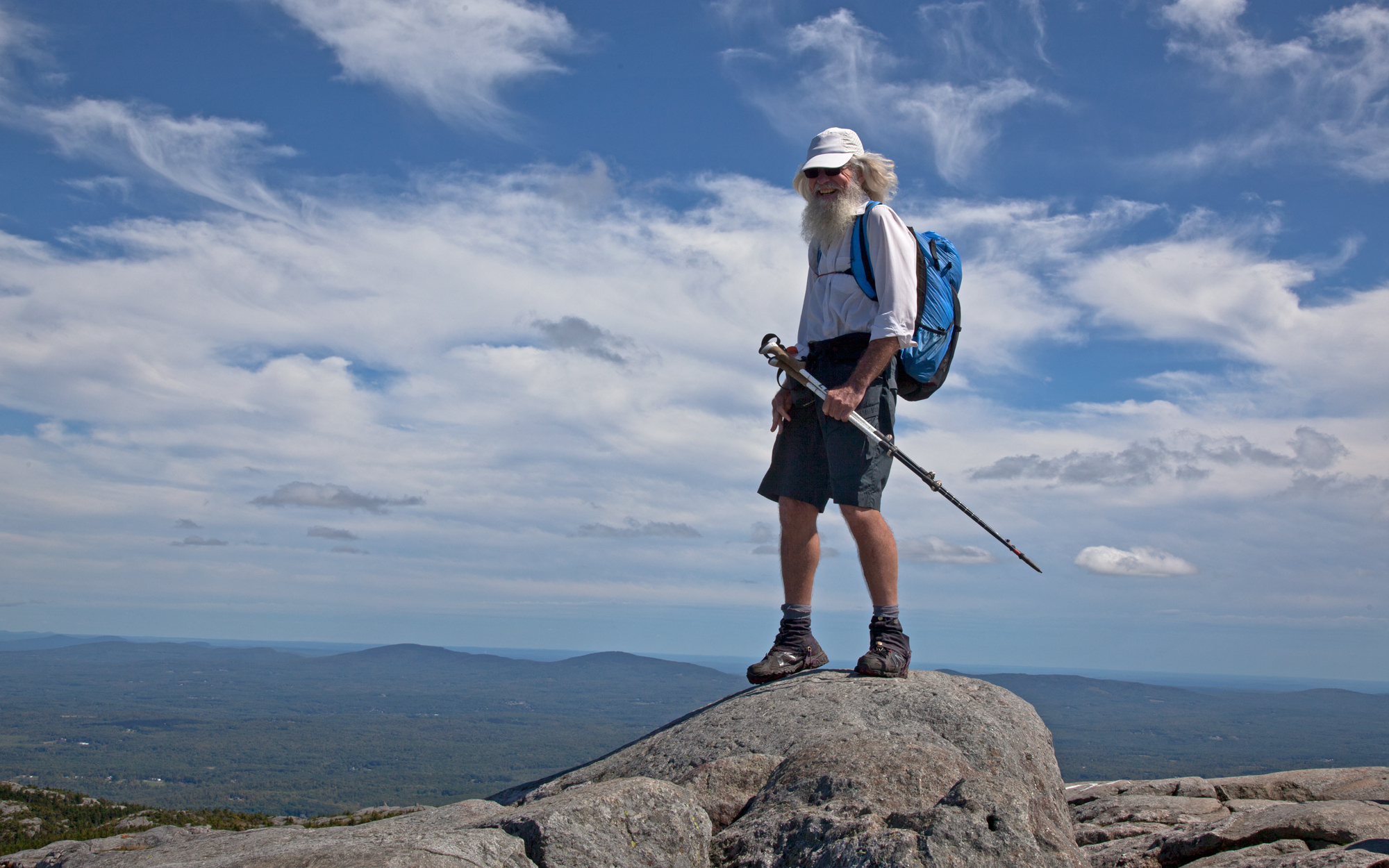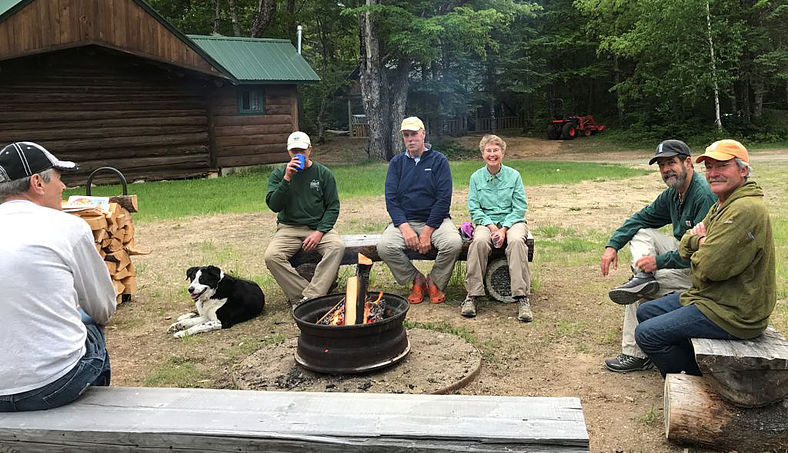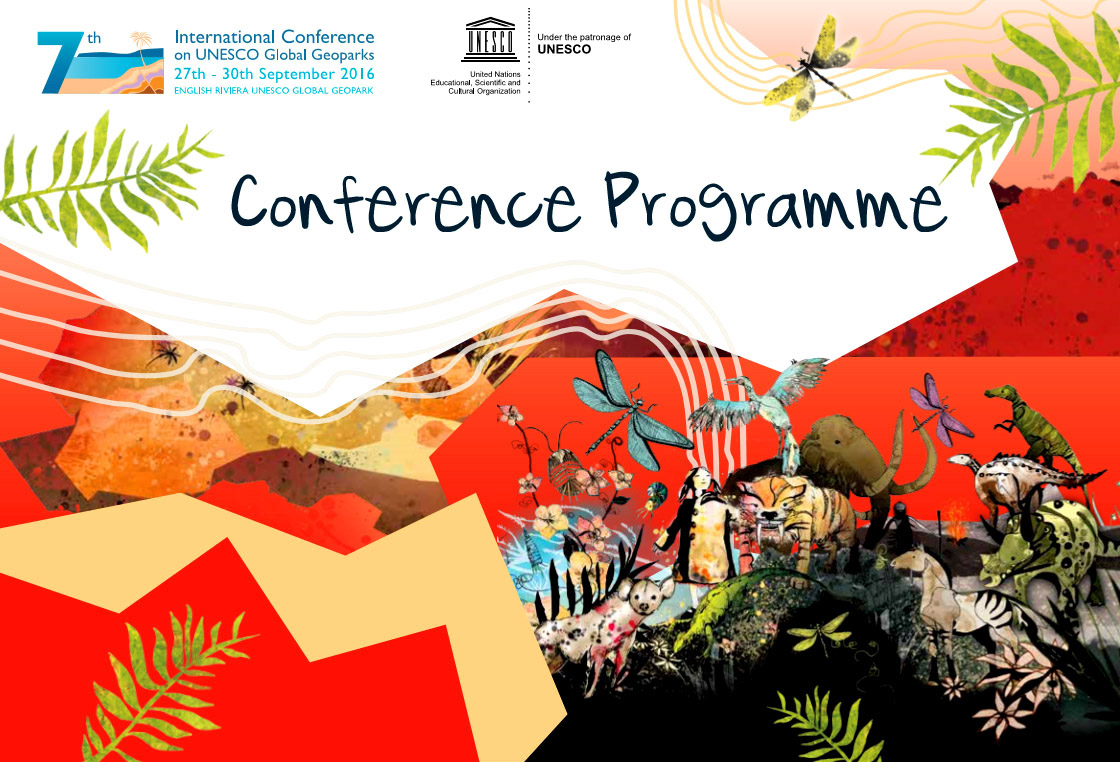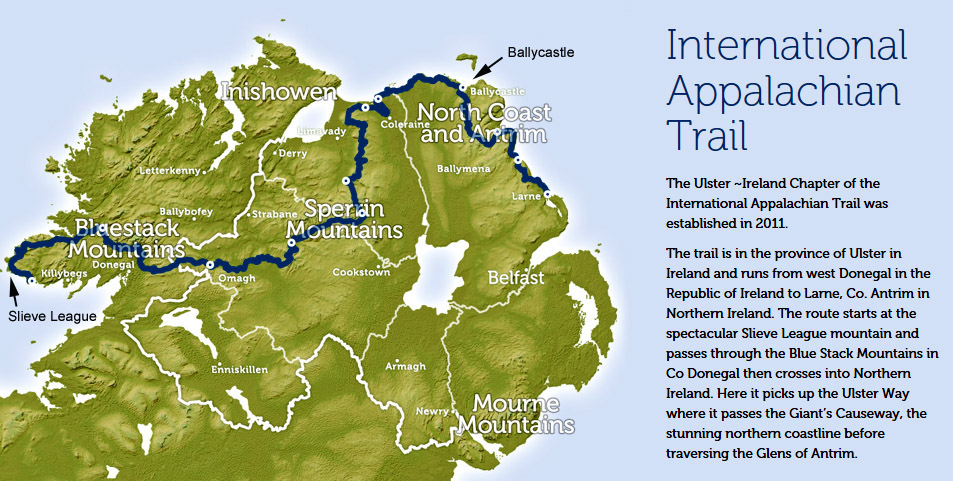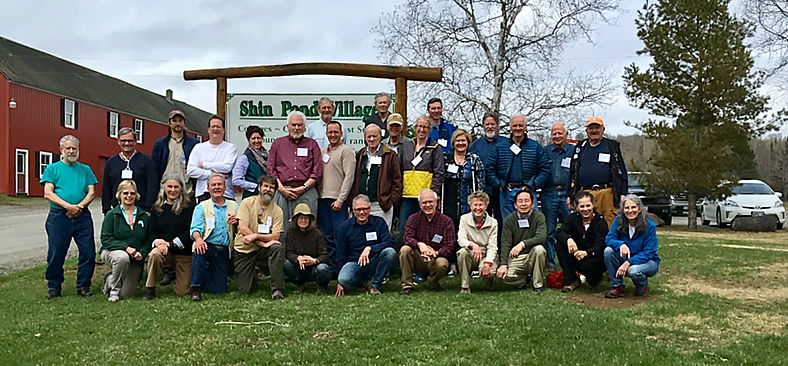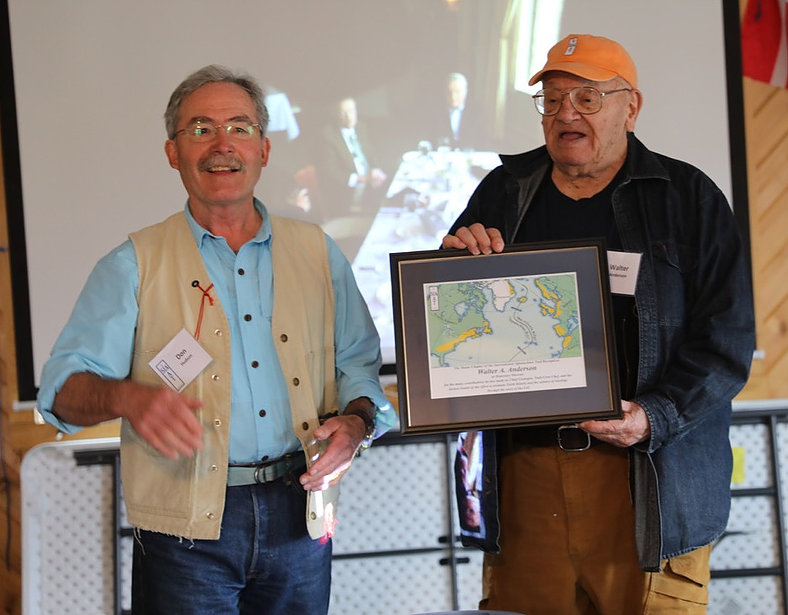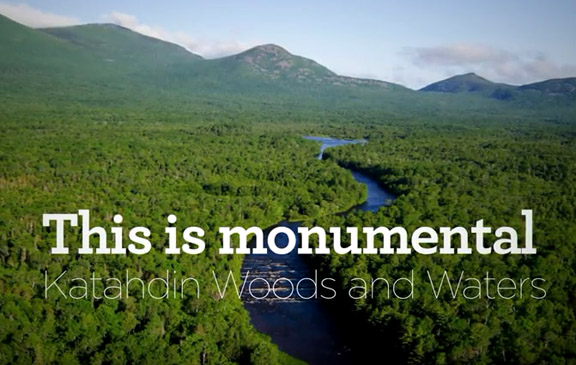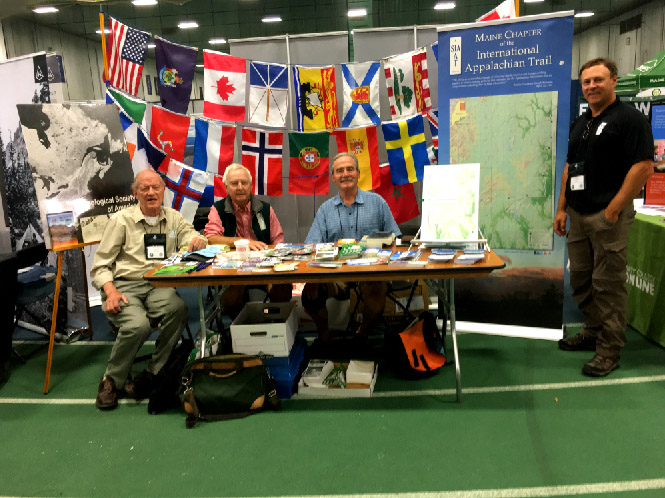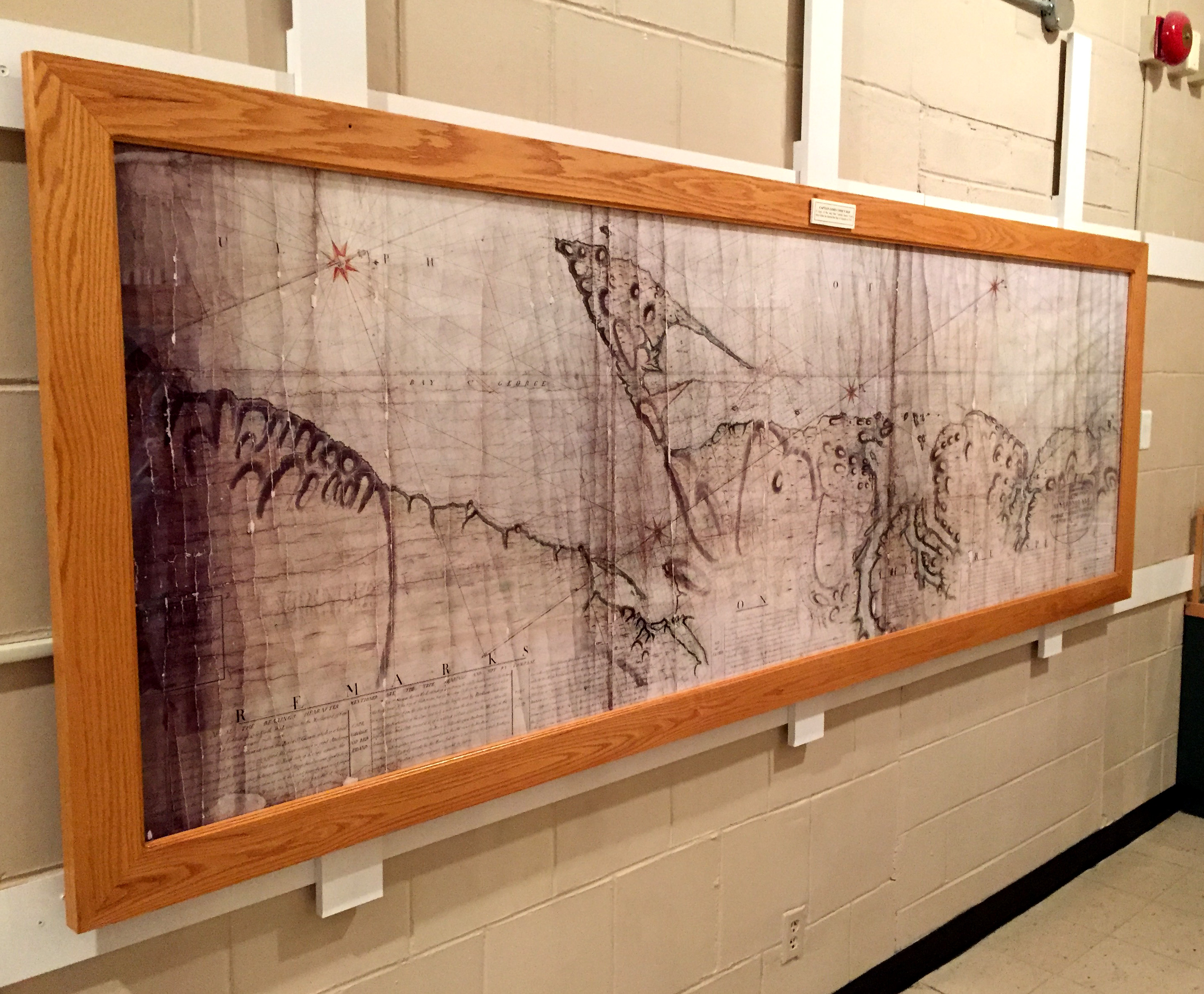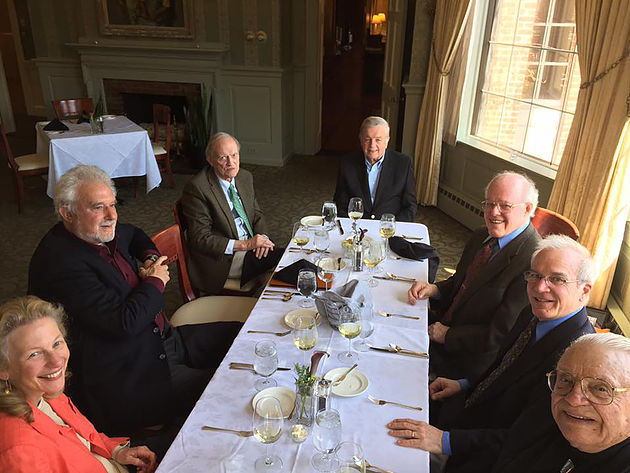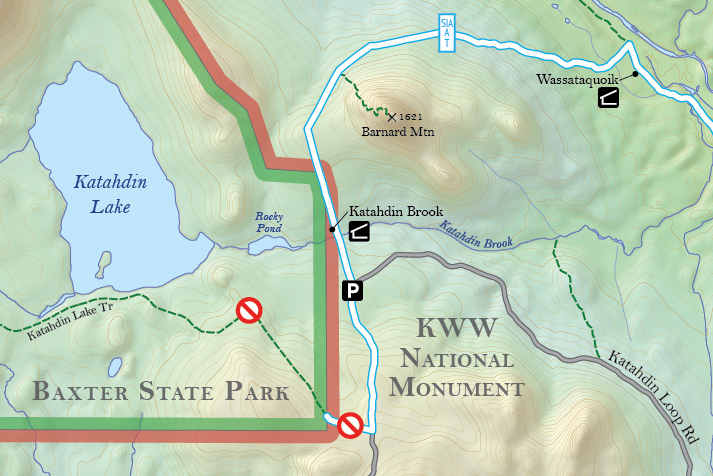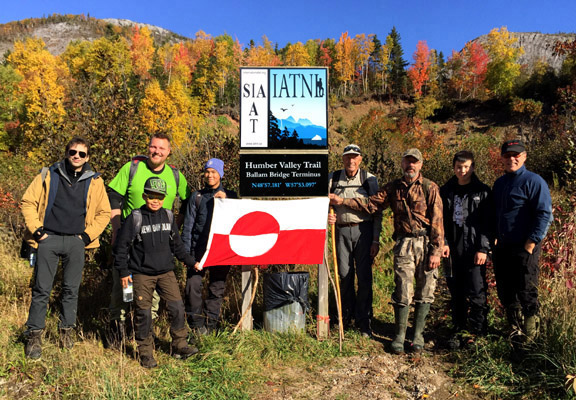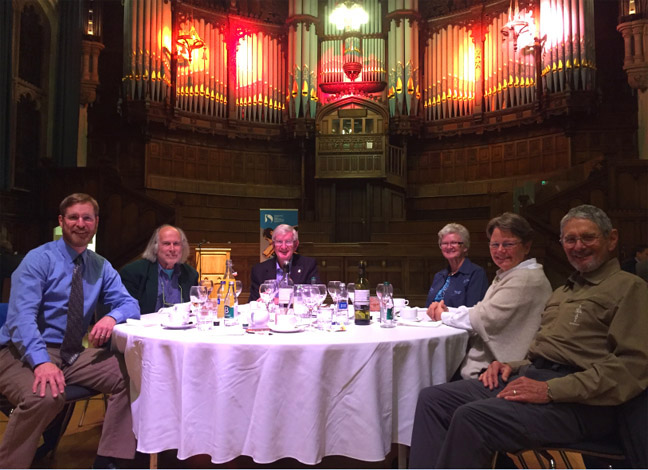The Board of the Maine IAT and I personally give a heartfelt Congratulations! to Eb “Nimblewill Nomad” Eberhart who, at age 83, became the oldest person to hike the Appalachian Trail.
Continue readingSpring Trail Work on the IAT in Maine
As happens every spring, a dedicated group of Maine IAT volunteers spent a few days on the trail in the Katahdin Woods & Waters National Monument clearing winter blowdowns (aka wind-falls or windthrows), checking lean-tos and re-stocking toilet paper in the privies.
Continue reading7th International Geopark Conference
On September 27-30, IATNL / Cabox Aspiring Geopark Chairperson Paul Wylezol attended the 7th International Conference on UNESCO Global Geoparks at Torquay, England, where he learned more about the UNESCO Global Geopark programme and gave a presentation on next year’s 250th Anniversary of James Cook completing his surveys of Western Newfoundland and Eastern Canada.
Continue readingUlster Ireland Hosts IAT Annual Meeting
On September 19 to 25, IAT Ulster Ireland hosted the International Appalachian Trail Annual General Meeting, from Slieve League in County Donegal to Ballycastle, County Antrim. The week-long event included scenic hikes, historic tours, fine dining and tasty beers, all with the great hospitality this beautiful emerald island is renowned for.
Continue readingMaine IAT 24th Annual Meeting
The 24th gathering for the annual meeting of the Maine Chapter of the International Appalachian Trail began at the Patten Lumberman’s Museum at 3:00 pm on Thursday, May 3rd.
Continue readingWalter Anderson Named Honorary Director
At the 24th annual IAT Maine meeting, President Don Hudson surprised long-time Board Member and IAT Chief Geologist Walter Anderson with a formal certificate recognizing him as an Honorary Director.
Continue readingFilm showcases journey through Katahdin Woods and Waters
On August 24th in 2016, an 87,563-acre plot of land in the heart of Maine was designated the Katahdin Woods and Waters National Monument by former President Barack Obama. Although met with controversy on all sides, the area had yet been explored on a large scale. In September 2017, a team of four Maine-born photographers set out on a three-part journey through Katahdin Woods and Waters to investigate.
Continue readingIAT Attends 2017 ATC Bienniel
The Appalachian Trail Conservancy held the workshop and business component of its 2017 Biennial Conference at Colby College in Waterville, Maine, between Friday, August 4th and Sunday, August 5th. The International Appalachian Trail was well-represented by a North American contingent, including Maine Chapter Board Members Dick Anderson, Don Hudson, Earl Raymond, and Herb Hartman, as well as Poul Jorgensen from New Brunswick and Paul Wylezol from Newfoundland.
Continue readingIATNL Commemorates James Cook Survey
During summer 2017, the International Appalachian Trail Newfoundland & Labrador in conjunction with Cabox Aspiring Geopark is commemorating the 250th Anniversary of British navigator, surveyor, cartographer and explorer James Cook’s survey of Western Newfoundland, his fifth and final year of Newfoundland surveys and tenth and final year in Eastern Canada.
Continue readingIAT Maine Honors Governor Joe Brennan
On April 10, 2017, IAT Maine honored former Maine Governor Joe Brennan for helping launch the International Appalachian Trail on Earth Day 1993.
Continue readingBaxter State Park closes Katahdin Lake Trail access from KWW National Monument
At their meeting in December, the Baxter State Park Authority closed access to Katahdin Lake along the route from the east while the park evaluates the potential impacts of the new Katahdin Woods and Waters National Monument.
Continue readingIAT Greenlanders Hikes IAT Newfoundland
From October 12 to 15, a small group of Greenland youth from the Uummannaq Peninsula and their Danish leader René Kristensen were in Western Newfoundland to hike sections of the IATNL. They were joined by French film maker Marc Buriot and arrived from St. John`s where they attended an Inuit Studies Conference and screened local Greenland films, including INUK.
Continue readingIAT Ulster Ireland Group Visits Scotland
At the IAT Annual General Meeting in Strabane, Northern Ireland on September 22, IAT Ulster Ireland officials expressed interest in touring sections of IAT Scotland to learn about trail planning and development by their northern neighbour.
Continue readingIAT, ATC and AMC Meet with Irish Mayors
On November 17, representatives from the International Appalachian Trail, Appalachian Trail Conservancy, Appalachian Mountain Club and the mayors of Donegal, Ireland and Derry City and Strabane District Council, Northern Ireland met at the AMC headquarters in Boston, Massachusetts.
Continue readingIAT Attends ALDHA’s 35th Annual Gathering
Highlighted by a blaze of fall colors, Board Members of the Maine Chapter of the International Appalachian Trail (MaineIAT) traveled along the Mohawk Trail (Rt.2) to Williams College, Williamstown, Mass. to attend the 3-day 35th Annual Gathering of the Appalachian Long Distance Hikers Association (ALDHA).
Continue reading
